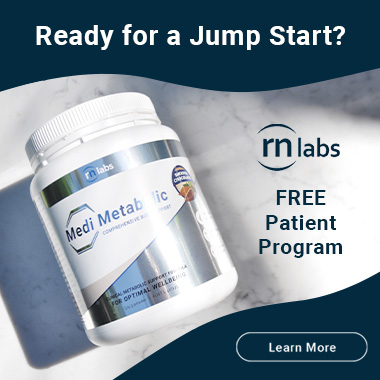Volume 31 Issue 2
Professional unity and evidence; two agents of change
Susan Arentz
For referencing Arentz S. Professional unity and evidence; two agents of change. AJHNM 2019; 31(2):54-55
DOI https://doi.org/10.33235/ajhnm.31.2.54-55
The first half of 2019 included many exciting events for Australian naturopaths and herbalists: a successful NHAA International Conference, the General Assembly of the World Naturopathic Federation (WNF), a government-funded initiative to re-review the evidence for some natural therapies (including naturopathy) with the view to reinstatement of private health insurance (PHI) rebates and a federal election. And if that wasn’t enough, the International Congress of Complementary Medicine Research (ICCMR) and naturopathy’s representation at the 72nd World Health Assembly (WHA) and articulated strategies for global integration of naturopathy into primary health care and universal health coverage. Phew!
It has never been more important to stay connected; things are changing fast and our voice is louder and stronger as we express the same message; ‘United we stand’ as the song goes. The NHAA stands for statutory registration of naturopaths, protection of title, minimum degree-level qualifications (with grandfathering determined by a board of naturopaths and herbalists) and with an agenda aimed to integrate naturopathy and herbal medicine into mainstream health care.
Professional unity is a pillar strategy for success. Another significant driver is turning out to be evidence. In the context of the Government’s decision to fund a re-review of the evidence that informed their original decision to remove naturopathy from PHI rebates, evidence and our communication of evidence, has never been more important. To refresh, the Government was persuaded that a re-review of evidence, due to new published evidence, was needed to improve the accuracy of their policy decision (to remove PHI rebates). The AJHNM issue published the convincing arguments in the first quarter in the article titled, “An evidence-based overview of naturopathic practice in Australia”1. So what is evidence and why is it important to us at this point in time?
This is a complex question and partially answered by the statement that evidence is the language of truth. Decisions based on evidence are considered to be based on facts, to be morally neutral and immune to the influences of culture. Multiple types of evidence, saying the same thing but from different perspectives, provides depth of information and is considered to be closer to the truth than single pieces of evidence or single accounts that answer single questions. Evidence does not only come from published research, it is provided by stakeholders, including end users, practitioners and policy makers, where all information is incorporated into a complex decision-making matrix, providing answers to a range of questions, even when there is none or insufficient evidence of efficacy in the published literature. Naturopaths and herbalists provided crucial input into PHI rebate argument through the practice-based research and collaboration initiative (PRACI)2, which helped to broaden the scope and strengthen the case to revise the decision.
A constant stream of new evidence from various perspectives provides an evolving evidence base, adapting and incorporating new knowledge which is drawn upon in evidence decision making in governance, policy, hospitals, hospices, communities, clinics or self-care. It’s obvious that no single person or group can fulfil such a need and an evolving, rigorous evidence base is the product of many perspectives and comes from collaboration, sharing knowledge and through respectful partnerships, people working together, asking questions, sharing information and disseminating knowledge.
Evidence can also be used to qualify impartiality and transparency of decisions. Decision makers can say ‘our decision was based on evidence’ and enable the evidence to be interrogated (using a standardised process) to confirm the accuracy of decisions. This not only preserves the integrity of people as decision-makers, it accounts for the human elements that may influence opinions and decisions. For example, it’s pretty safe to presume that most of us have a positive opinion in favour of naturopathy and herbal medicine as primary health care, after all, we are naturopaths and herbalists, trained to provide care to fellow human beings to improve health and to live our lives congruent with our beliefs in natural health care, and to express our values in our lives and in our work. This is pretty much the same for all health practitioners, working with people and who value health and believe in their discipline. One of the aims of evidence is to neutralise these normal human biases using systematic processes, standardised reporting and through intra and interdisciplinary peer review.
Systematic methods involve standardised, ethical and logical approaches to answer questions. For example, if we wanted to answer the question: Does Vitex agnus-castus reduce pre-menstrual breast pain? findings from an investigation of breast cells in a petri dish with added Vitex agnus-castus extract could not logically or accurately answer this question; it may answer other questions, just not the one that was asked. Systematic process relies on questions being asked before answers are known, rather than the other way around. Importantly, it is the question that determines the approach (method) needed to accurately answer a question. This order aims to improve the accuracy and precision of an answer. For example, the answer to the question above would only be accurate if women with pre-menstrual breast pain taking Vitex agnus-castus were included — a logical and rational answer requires the investigation to include input of women with pre-menstrual breast pain.
Standardised reporting means that all aspects of the methods and the results were reported so that readers can consider the factors that may have influenced the answer. This includes potential conflicts of interest, settings, and the rationale for the approach. It also includes reporting all the answers, even those that were surprising or didn’t seem important or relevant. This shows that the researchers didn’t try to favour any answer, that they approached the question with an open mind in order to provide a truthful and accurate answer. Peer review gathers the opinions of professional peers — either horizontal or vertical, to obtain different opinions and perspectives about the transparency of the investigation and the importance (impact) of the results. The peer-review process incidentally communicates with other health professions. When an article (manuscript) is submitted here to the AJHNM, it undergoes peer review via the editorial board. We have had some surprisingly diverse reviewers including a senior lecturer of veterinary science, immune-endocrinologists and employees of the national higher education regulator as well as naturopathic and herbal academics in international universities. These people have actively participated in building the evidence base for naturopathy and herbalism through this journal; they believe in the intellectual merit of our professions and they want to help us to improve our transparency and academic rigour. Our engagement with peer reviewers has informed other disciplines about naturopathy and herbalism and presented our profession as being transparent and open to constructive criticism. It has defined us as developing accountability and responsibility, which is something of which we can be proud. It also provides connection to other health professions through a common language.
Given the success of persuading the government to re-review of evidence for naturopathy, based on our growing evidence base, our understanding and communication of evidence has never been more important. It is imperative that naturopaths and herbalists continue to engage with the process and continue to provide evidence to steer the agenda, so we are true to ourselves, and our philosophies, principles, practices and traditions. A unified voice is an imperative agent for change and so is our approach to evidence. We need to build on our success, continue to ask questions, seek answers openly and report transparently, to illustrate and communicate about naturopathy and herbal medicine as we know and understand it. If you are thinking of submitting an article for peer review but not sure where to start, please get in touch and we may be able to help with providing a mentor to co-author through our new MACA program, and help you become a published author.
The AJHNM has a new method for manuscript submission. Please go to the NHAA website, click on publications and then on https://mc04.manuscriptcentral.com/ajhnm If it is your first visit, please create an account and follow the prompts.
This issue includes photos from our most successful NHAA International conference to date, including a summary of the Centenary Room by the unstoppable Michelle Boyd and photos by Hannah Boyd — how committed are these two? It also includes a wonderful article about adaptogens that documents our understanding and some of the dilemmas researchers face when investigating our complex naturopathic and herbal interventions. This issue also includes the reprint of the Best article awarded at the NHAA conference; congratulations Dr Ses Salmond and colleagues. Enjoy.
Author(s)
Susan Arentz PhD, BHSc(Hons)
Editor, Australian Journal of Herbal and Naturopathic Medicine
PO Box 696, Ashfield, NSW 2131
editorajhnm@nhaa.org.au
References
- Wardle, J. et al. An evidence-based overview of naturopathic practice in Australia. Australian Journal of Herbal and Naturopathic Medicine 2019;31(1): 9.
- Steel, A. et al. An Overview of the Practitioner Research and Collaboration Initiative (PRACI): a practice-based research network for complementary medicine. BMC Complement Altern Med 2017;17(1): 87.






